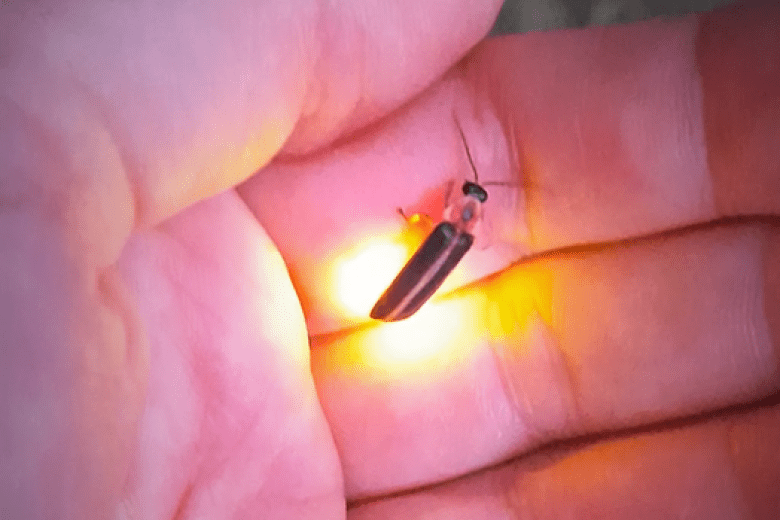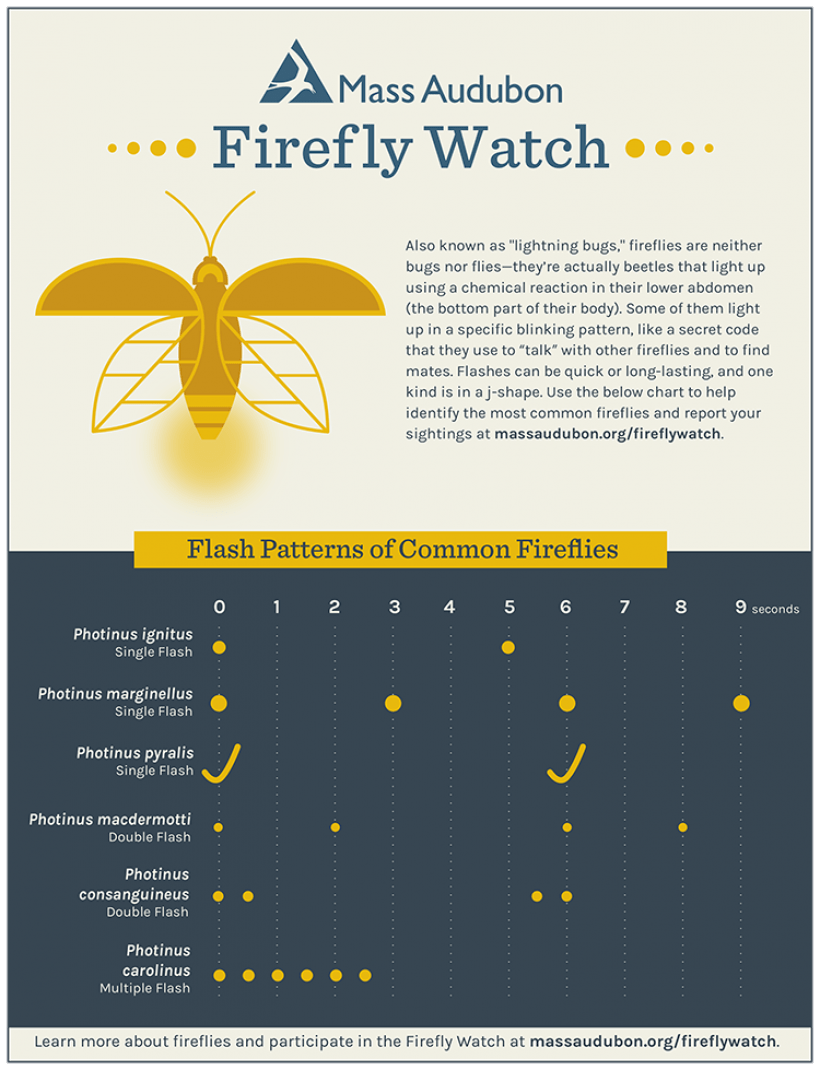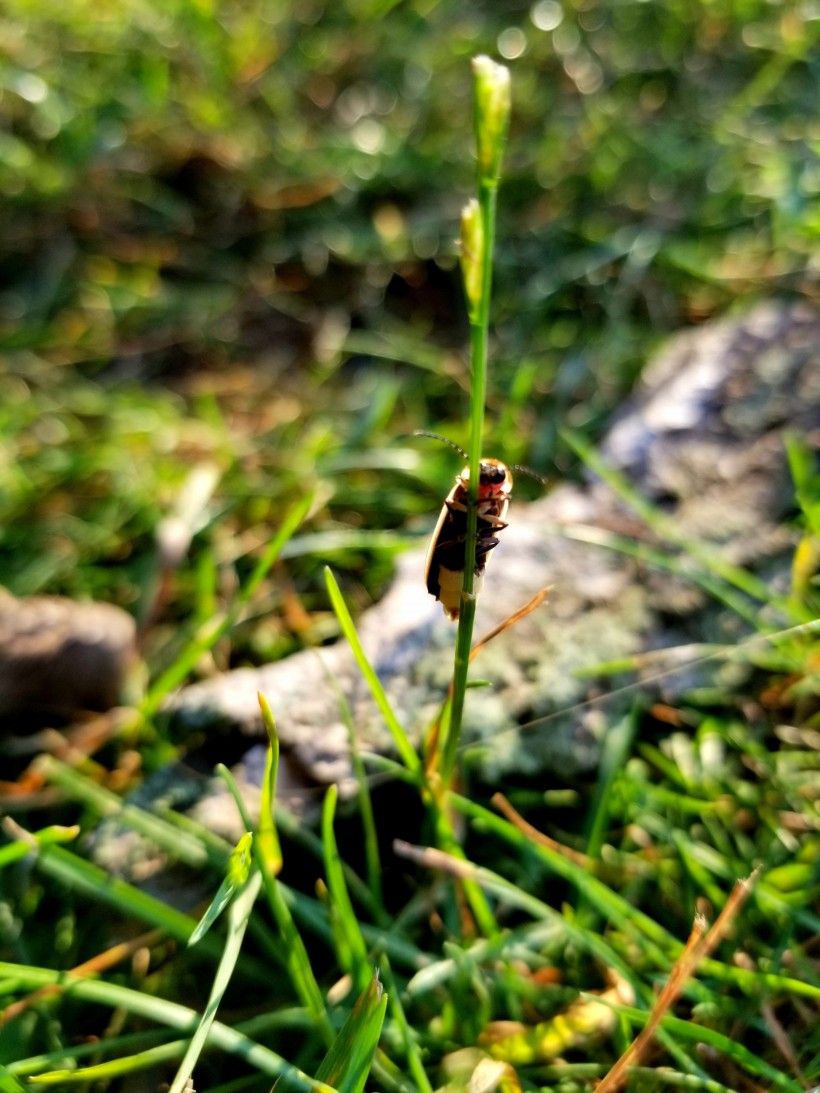Jewels of the Night

Fireflies delight people of all ages, and they’re prolific at this time of year.
Summer is not complete without spending a few, warm summer evenings watching or catching these lighted beetles! There are at least 170 species of fireflies in North America, and they may be found in all the states except Hawaii. In their larval form, fireflies are often referred to as “glow worms,” and while all larvae glow (and even some eggs), not all adults light up; that is species dependent. Some fireflies or “lightning bugs” are active during the day, while others are active at night. Those that are active during the day use pheromones to attract a mate, while those that are active at night use their flashes of light to issue a warning to potential predators that says, “Don’t eat me. I taste bad!”
If you watch closely, you’ll notice that not all fireflies share the same flash pattern. Some give a single flash with a five second pause before the next, while others might do a double-flash several seconds apart. And still others will produce multiple flashes. Mass Audubon FireFly Watch created this nice graphic to help differentiate some of the common ones.

The unique flashes allow fireflies to find other individuals of the same species and, ultimately, a mate. An article in Scientific American states that studies reveal, “Higher male flash rates, as well as increased flash intensity, have been shown to be more attractive to females in two different firefly species.” It seems frequent and bright flashes are best!
Besides the duration and length of time between flashes, flash color and the height at which the flasher flies are species-distinguishing courtship characteristics. Fireflies must be careful, though. Females of the Photuris versicolor species will mimic other fireflies’ flash patterns to lure in a male and then eat him! Males of the Photuris versicolor are tricksters, too. According to an article on Animal Diversity Web, the males will mimic the flash pattern of other species—species the female Photuris versicolor wants to eat—just so they can get close to a female Photuris versicolor to mate. Male fireflies are usually the ones flying around, while females typically stay on the ground or low in vegetation.
Fireflies’ light or bioluminescence may be green, yellow, orange or even blue and is produced during a very efficient chemical reaction courtesy an enzyme called luciferase. The bioluminescence is sometimes called a “cold light” because very little heat is generated from it, unlike that of a lightbulb. The color generated seems to be a function of geography, species and complicated chemical reactions that factor in the polarity of the luciferase protein cavity! (Read more about that here.)

If you enjoy watching fireflies, limit your pesticide use and do not have your yard sprayed. Remember, their immature forms are living in the soil and need prey to eat—prey that loves leaf litter and rotting logs, which also provide shelter, fertilizer and improved soil moisture. It's a good idea to be mindful of ground disturbance and foot traffic, since female fireflies are often on the ground. Next, eliminate light pollution, especially in the summer and fall. Light can obscure the light signals fireflies use to communicate and find a mate. Use motion-sensors and point light downward onto the path you’re illuminating to lessen light used. Finally, enhance their habitat. Humidity is essential, so wet areas are good. Also, modify your mowing habits. Fireflies like long grasses, which can shelter them during the day and serve as watch towers from which they can signal their mates at night.
Photos by Melissa Reckner.